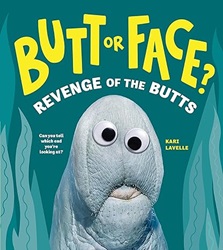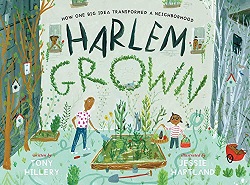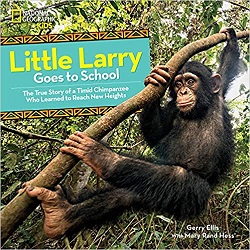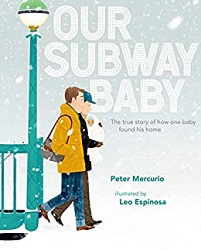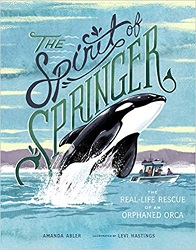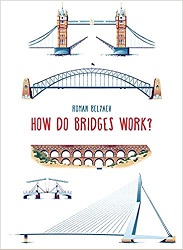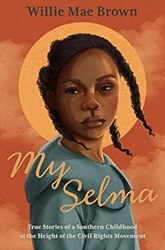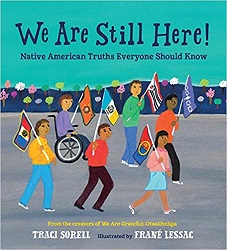Review of Drawing on Walls, by Matthew Burgess, pictures by Josh Cochran
A Story of Keith Haring
by Matthew Burgess
pictures by Josh Cochran
Enchanted Lion Books, 2020. 60 pages.
Review written October 3, 2020, from a library book
Starred Review
This extra-large picture book biography of Keith Haring is exuberant and joyful – like the subject’s work.
It emphasizes how much Keith related to children and how much he valued the reactions of people to his work. The book begins with action:
Here is Keith Haring painting a mural with hundreds of children in Tama City, Japan.
Keith draws the outlines and the kids fill them in with their own designs.
It goes on to tell about his childhood and drawing together with his dad. Even when he was young, his art spilled out and all over the place.
Different phases of his life are told about with bright and colorful pictures. We see him ignoring boundaries and following his dreams. The book nicely communicates what was important to Keith in a few sentences and episodes like these:
Keith especially liked painting on the floor by the open door where the sunlight poured in.
People passing on the street would stop to watch or talk with him about what he was making. Keith loved it!…One day in the subway, Keith noticed blank panels where advertisements used to be.
Suddenly, he zipped up to the street, bought a box of white chalk, dashed back downstairs…
and began drawing on the walls.People paused as they rushed from here to there.
For Keith, this was what art was all about – the moment when people see it and respond.Maybe it makes them smile,
maybe it makes them think,
maybe it inspires them to draw
or dance or write or sing.
This is a lovely celebration of an artist who painted with joy.
Disclosure: I am an Amazon Affiliate, and will earn a small percentage if you order a book on Amazon after clicking through from my site.
Disclaimer: I am a professional librarian, but the views expressed are solely my own, and in no way represent the official views of my employer or of any committee or group of which I am part.
What did you think of this book?
*Note* To try to catch up on posting reviews, I’m posting the oldest reviews I’ve written on my blog without making a page on my main website. They’re still good books!

